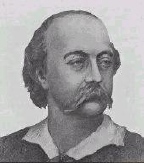|
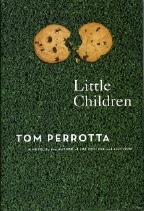
|
|
 |
| 'Little Children' and the author Tom Perrotta. |
|
Book two of Tom Perrotta's novel, 'Little
Children' is
subtitled 'Madame Bovary' and takes Flaubert's
classic novel of that name as its reference point. This begs a
very obvious comparison, but in actual fact, Perrotta's novel
shares its inspiration with a host of classic literature. This
article aims to point out some of the shared concerns and themes
in order to inspire anyone who has enjoyed 'Little Children' to
take another look at some of the classics.
Many people tend to avoid classic literature, imagining that it
is stuffy, difficult to read and irrelevant to society today. It
is true that the language of the classics is the language of past
centuries. In some cases this can mean very long sentences, full
of parentheses, requiring a determined effort of concentration
by the reader. Some classic literature also utilises language that
is no longer current today, the common misconception being that
the reader will be submerged in 'thee' and 'thou' rather
than 'you' and 'yours'. Yet much classic
literature is not subject to these disconcerting tendencies. Those
who are daunted by 'the classics' tend to forget that
they are for the most part, at bottom, extremely good stories,
packed with truisms that apply as much to society today as they
did at the time of publication. It is the universal truths in which
they deal, that have made them literary classics. Whilst social
standards and economic conditions may change, the human beings
that make up society today remain in essence identical to those
who lived hundreds of years ago; humans still love, hate, fear
and hope.
'Little Children' is in essence a story of ordinary individuals
living their lives, seeking success and happiness, but all the
while constrained by social expectation. Its appeal lies in the
fact that the reader can understand and identify with the emotions
and situations experienced by Perrotta's characters. It is
also a reflection of the society in which we all live, so we are
able to understand the restrictions placed upon the characters
by social expectations. Exactly the same arguments can be made
for the literary classics with which 'Little Children' can
be compared.
|
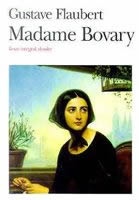
|
|
|
|
Madame
Bovary and her creator, Gustave Flaubert |
Perrotta himself acknowledges his debt to Gustave Flaubert's
most famous novel, 'Madame Bovary'. One of Perrotta's
key themes is the frustration and dissatisfaction that marriage
can create when it is coupled with external social pressures. Todd
is a house-husband, looking after his young son whilst his wife
earns the money to support their family. Supposedly Todd is studying
for law exams so that he can ultimately become the main family
breadwinner. Sarah is a housewife, also with a young child and
a husband who seems to have little time for her. These two characters
are thrown together and a mutual attraction develops based on their
shared boredom and frustration with their respective lives. This
storyline is essentially that of 'Madame Bovary'. Emma
Bovary is a young wife married to a respectable middle class gentleman
who can offer her a decent lifestyle, but nothing in the way of
love or excitement. Bored and frustrated by the position in which
she finds herself, she enters into a series of affairs. In both
novels, the theme of adultery is viewed as a response to dissatisfaction
with a social situation. The key difference lies in the changed
social standards. Emma Bovary's adulterous behaviour is regarded
by society as being absolutely unforgivable and the consequences
for her are disastrous. In today's society, adultery is not
to be condoned, but it is recognised that it does happen; the consequences
for Sarah and Todd are much less severe, although no less painful.
|
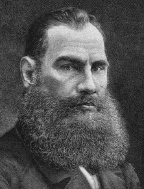
|
|
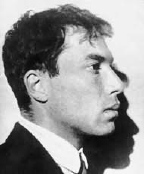 |
| Leo
Tolstoy (top), Boris Pasternak (bottom). Intense young
men write ageless novels. |
|
'Madame Bovary'
is not the only piece of classic literature to deal with the theme
of adultery. Two of the greatest Russian
classcis, 'Anna Karenina' (Leo Tolstoy) and 'Dr
Zhivago' (Boris Pasternak) also explore this moral problem.
Anna, the heroine of Tolstoy's great classic, is trapped
in a loveless marriage. Like Perrotta's character Sarah,
Anna's husband is much older and more concerned with his
own life and career than with his marriage. Anna feels stifled
and dissatisfied and finds herself unable to resist the temptation
to follow her heart and begin an affair with a man whom she truly
loves and who returns her love. Once again, this is a novel set
in the nineteenth-century and, despite defying social convention,
Anna's story is ultimately one of tragedy. Like 'Anna
Karenina', 'Dr Zhivago' is a love story. Yuri
Zhivago, the main character is not oppressed by a loveless or unsuccessful
marriage. In fact he adores his wife, but he is also in love with
another woman, Lara. This story needs no introduction – it
is one of the classic romances, immortalised in film, but, like
Perrotta's novel, it is not just a love story, but a brilliantly
drawn record of the time and society in which it is set. Since
both these novels were originally written in Russian, modern English
translations tend to make concessions to our modern language, offering
thoroughly readable and compelling stories.
|

|
A
new novel about Henry James by Colm Toibin ensures
renewed interest in 'The Master'.
|
In a related vein, 'Portrait of a Lady' (Henry James)
deals not only with married life, but with the choices that lead
up to that marriage. Isabel Archer, the heroine, like the other
heroines discussed above, is ultimately unhappy in her marriage.
However, Henry James concentrates much of the novel on the courtship
process. Isabel is a strong-minded, independent woman who refuses
to be guided by others in her choice of husband. However, in the
last resort, the man to whom she finds herself married is very
different from the man she thought she was marrying. The reader
is forced to watch Isabel become a very different woman as she
is oppressed and made miserable by her marriage. In this respect,
comparisons between 'Little Children' and 'Portrait
of a Lady' can also be made; Perrotta's novel may be
set after the fact of marriage, but there is still a strong sense
that his main characters are also disappointed in their choice
of partner. This fact is a strong driver in the adultery that forms
the main theme of Perrotta's novel. If this kind of storyline
is to your taste, George Eliot's 'Daniel Deronda' offers
a similar subplot with a strong-minded heroine determined to marry
the man of her choice and later forced to repent her decision.
|
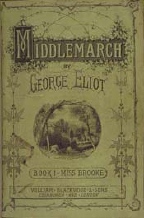
|
|
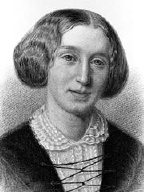 |
| 'Middlemarch'
and author George Eliot. |
|
'Little Children' is not only about love and adultery, but
also weaves a tale of modern society. The subplot focuses on the
social politics that result when a paedophile moves into the quiet
suburb in which the novel is set. This exposes all kinds of moral
complexities and cleverly illustrates the highly political atmosphere
of suburbia when it is riled. Once again, this is a plot that shares
much with the classics. George Eliot's 'Middlemarch' is
perhaps one of the greatest descriptions of middle class suburbia
ever written. It details the small town politics of the fictional
town of Middlemarch and its surroundings. Like Perrotta, Eliot
focuses on two married couples, both of whom marry in haste in
the heat of love, only to be faced with the reality of married
life and to feel the dissatisfaction that it can bring. Eliot's
dissatisfied couples do not turn to adultery, but they are constrained
and frustrated by social expectations. Against the stories of these
four lives, Middlemarch life is brilliantly portrayed with all
the social snobbery, petty concerns and rivalries that are to be
found in a suburban middle class society.
If social commentary is what appeals in Perrotta's novel,
then there is no shortage of classic literature that employs this
theme. Jane Austen is a favourite author with many and is certainly
very accessible. Her popularity comes as much from her witty style
as her subject matter. She had an incredible gift for observation
and for turning the people around her into larger than life characters.
All her novels provide a fascinating, humorous insight into nineteenth-century
suburbia and the moral judgements and petty concerns that drive
people. They also have the added bonus of including romance and
always providing a happy ending.
Many, many more examples of literary classics could be highlighted
to illustrate the rich heritage into which 'Little Children' fits.
Hopefully this selection is sufficient to induce anyone who enjoyed
Perrotta's novel to reconsider our literary heritage. It
is something to be enjoyed for its enduring message and continued
relevance today, not something to inspire trepidation or suffer
from the barrier imposed by literary snobbery.
|
|



